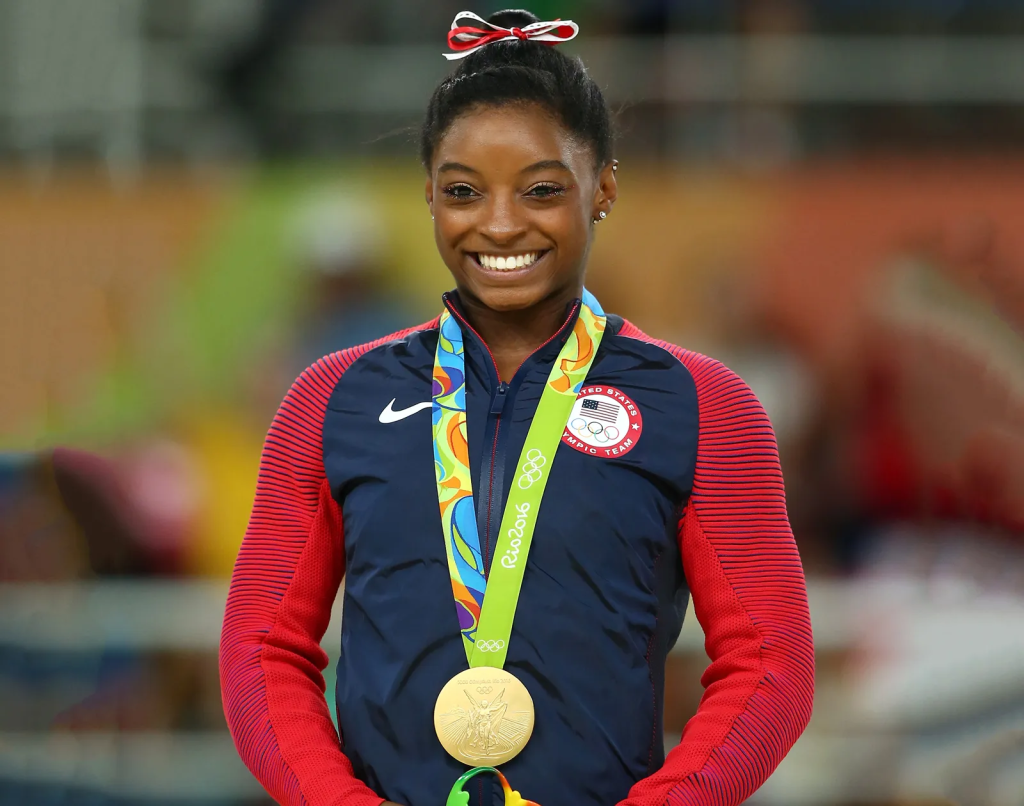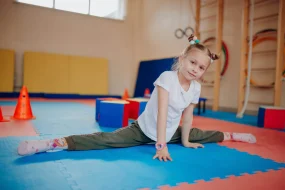Here’s something interesting to note. Our very own Simone Biles is one of the most decorated gymnasts of this generation and stands at 4 feet 8 inches tall. Now, it’s very understandable to think this raises the question of whether or not gymnastics stunts growth. The question frequently arises amongst parents, teens, and young adults preparing to participate in sports. With the speculation surrounding growth plates and exercise, it’s high time we uncover the truth about this age-old myth.

Here, we will analyze the question, bust some common misconceptions, and present five important truths that parents, gymnasts, or enthusiasts should consider in 2025. By doing so, we hope that fear is alleviated.
What is the Concern? Does Gymnastics Stunt Growth?
The concern isn’t new. If you’ve ever watched a gymnastics competition, you might have noticed that most elite gymnasts are shorter in stature. Naturally, people ask: Does doing gymnastics stunt your growth? And if so, how does gymnastics stunt your growth?
Some believe intense training affects the growth plates—those soft parts at the ends of bones where new growth happens during childhood and adolescence. Others point to delayed puberty or the extreme physical demands gymnasts face.
But is there truth to these concerns or are they simply long-standing misunderstandings?
Truth #1: Genetics Play the Biggest Role
The most crucial factor in a person’s height is their genetics. Your DNA, inherited from your parents, largely determines whether you’ll be tall, short, or somewhere in between. Gymnastics doesn’t change your genes.
Multiple scientific studies confirm that height has more to do with your family traits than with sports activities. In other words, if both your parents are short, you’re more likely to be short too—regardless of whether you do gymnastics.
The Timing Coincidence
It’s common for young athletes, especially girls, to start gymnastics before puberty. Since they’re generally smaller and lighter at this stage, the illusion is created that gymnastics stunts growth. In reality, these athletes may always have been on the shorter end of the spectrum due to genetics.
Truth #2: Gymnastics May Affect Growth Tempo, Not Final Height
Does being a gymnast stunt your growth permanently? No. But it might influence the timing of growth.
Some female gymnasts experience delayed puberty, which can also delay growth spurts. This happens because rigorous training and low body fat levels can signal the body that it’s not in the best condition to trigger puberty. This is a temporary phase, affecting the growth tempo rather than the total outcome.
Growth Plates Explained
Growth plates are areas of developing tissue at the ends of long bones in children and teens. These plates are vulnerable, but they’re also resilient. As long as they aren’t injured, they function normally—even in athletes. So while gymnastics is physically demanding, there is no scientific evidence that it causes damage to these growth plates in a way that stunts height permanently.
Not convinced? Expert medical reviews and pediatricians echo the same: Gymnastics doesn’t stunt growth—it may only slow down the process temporarily for some individuals.
Truth #3: Nutrition and Rest Are Game Changers
Let’s talk lifestyle. Healthy kids need more than just safe training—they need fuel. Proper nutrition and rest are essential for physical development, regardless of their involvement in sports.
In fact, poor nutrition or sleep deprivation—not gymnastics—is much more likely to impact growth. Training 4 to 5 hours a day without refueling your body? That’s when problems start. But a well-balanced diet and adequate recovery ensure that the body operates at full speed.
Important Nutrients for a Growing Gymnast:
- Protein – Supports muscle development
- Calcium – Strengthens bones
- Vitamin D – Assists in calcium absorption
- Iron – Prevents fatigue and supports energy levels
- Carbohydrates – Replenish energy stores
Want to explore more tips on maintaining a balanced lifestyle? Check out this post on affordable meal plans for active students—a great read even for young gymnasts!
Truth #4: Body Type Selection, Not Transformation
Here’s something most people overlook: gymnastics doesn’t create short bodies—it often selects them.
Elite gymnastics favors athletes who are naturally compact, strong, and agile. A shorter gymnast has a lower center of gravity, making it easier to tumble, flip, and balance with control. Tall athletes can do gymnastics too, but they may face more challenges.
Think of it like jockeys in horse racing. They aren’t short because of racing—they’re racing because they’re short!
Truth #5: Studies Show No Long-Term Impact on Height
Research has done its homework on this one. Several long-term studies have followed gymnasts over time and found no evidence that gymnastics leads to shorter adult height.
A great example is a Canadian study that followed young gymnasts over several years. By the time they hit adulthood, their final height aligned with their predicted genes—not their level of gymnastic activity.
And let’s not forget, non-gymnasts of similar age and background showed similar height outcomes. Once again confirming—there’s no magic curse attached to doing cartwheels and flips!
FAQs: Clearing Up the Confusion
Why does gymnastics stunt your growth, according to myths?
Most myths point to physical strain, overtraining, or hormone suppression as reasons. But modern research shows these factors are typically exaggerated and don’t affect final height.
How does gymnastics stunt your growth—if it does at all?
At best, gymnastics might delay certain growth milestones, due mainly to intense training and delayed puberty. Even then, it’s temporary unless paired with poor nutrition or chronic overtraining.
Does being a gymnast stunt your growth more than other sports?
Nope. Other sports like ballet, running, and figure skating involve similar physical demands and body types. The myth just seems to stick with gymnastics more because of the focus on youth and early specialization.
So, Should You Let Your Child Participate in Gymnastics?
Absolutely. In fact, gymnastics offers a wide range of benefits beyond just athletic performance. Here are a few reasons to consider letting your child get involved:
- Improves strength and flexibility
- Teaches discipline, leadership, and goal-setting
- Encourages strong bone development in early years
- Promotes social interaction and confidence
If your child loves to flip, swing, and jump—let them embrace it. Just ensure a balanced lifestyle with proper food, adequate sleep, and emotional support.
For more on keeping active kids healthy, explore this post on setting effective fitness goals for young athletes.
Final Thoughts: Myth Busted
So, does gymnastics stunt your growth? Based on everything we’ve covered, the answer is a confident no. While it might temporarily influence growth timing due to physical stress or delayed puberty, there’s no permanent impact on final height—especially when safe training and proper nutrition are in place.
Gymnastics remains one of the best developmental sports available. Whether a child pursues it recreationally or competitively, it fosters physical, emotional, and social growth far more than it ever stunts it.
Takeaway Tips for Healthy Gymnastics Participation
- Provide a balanced diet rich in nutrients
- Ensure rest days and enough sleep
- Watch signs of overtraining or stress
- Support mental well-being as much as physical
- Choose coaches who value health over performance
So when someone asks, does gymnastics stunt your growth?, you now have the knowledge to kindly clear up the confusion—and maybe even inspire the next Simone Biles.










